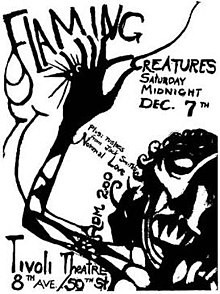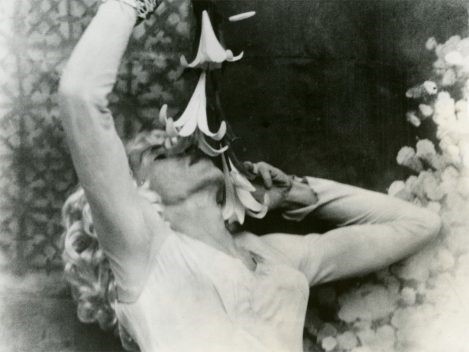Author: Cameron Fairchild
Welcome back to Joining the Cult, an exploration of the weird, the underground, and the experimental. While in the past this column has specifically focused on the 60s and 70s as the period of Hollywood’s destabilization and the rise of independent cinema, this year I’m going to draw on essentially any period, decade, or project I find fits the label of a ‘cult film.’ To start the year off right, and to perhaps leave the 60s behind with one last visit, this month I’m looking at another one of the pioneers of the underground cinema of the 60s, Jack Smith, and his film Flaming Creatures, his controversial and legendarily disavowed 1963 film.
Flaming Creatures is a striking experiment – decidedly anti-narrative, explicit in its sexual content, which includes rape, and filmed for the most part in close-up, relishing in disorientation, nudity, and hedonism. By the standards of 1963 America, there was just no chance for it to stay alive. It has been documented by this column that the 60s and 70s saw a general rise in depictions or allusions to sex on-screen, as the Hayes Code dropped out of practice and the American sexual revolution overshadowed old restrictions. Still, Hollywood films remained a lot more chaste—and a lot more straight—than the content displayed in Smith’s film. Showings of the film, which debuted at the Bleecker Street Cinema in 1963, were few and far between, with theaters rejecting the film for its explicit nudity and sexual content. Even the noted sexploitation-screening Tivoli Theatre cancelled a planned showing of the film.

Then in 1964, Flaming Creatures, at a rare showing at the New Bowery Theater, was interrupted by the police, who seized the print. They also stole Andy Warhol’s work, a film that was to be screened alongside it, resulting in the loss of his film. The seizure also began a lengthy legal process that saw the conviction of Jonas Mekas, Florence Kapf and Ken Jacobs, the three held responsible for screening the film. Creatures’ supporters suffered—Supreme Court Justice Abe Fortas was stripped of the bench in part for advocating for the film—and the film was sought after by police, even in unofficial screenings. The 60s hated the film, and it wasn’t until Smith’s death in 1989 that film critic J. Hoberman and artist Penny Arcade restored the film and brought it back to the public.

Is Flaming Creatures worth seeing? It’s 49 minutes long in its current form and it’s available on YouTube, so there’s no bar to entry. Revising its historical importance as a work of queer cinema tarnished by a reactionary police force and hostile governmental figures, it’s pretty obvious that the 60s, despite the film’s critical supporters, were still rife with the old guard, not ready to accept a film like Smtih’s and going to drastic lengths to discard it. The film is certainly fascinating, formally chaotic, and at times deeply upsetting, but it remains radical and fearless in its content. Its ability to survive through such harsh backlash is a testament to the impact it made on what audience it did have, and, as any work deserves, it should absolutely remain preserved, so that it might continue to inspire others.
https://www.youtube.com/watch?v=S8sqt2etJqI
Further Viewing:
Normal Love (1964) – Smith’s unfinished follow up to Flaming Creatures
Blonde Cobra (1963) – Ken Jacobs’ equally chaotic experiment
CAMERON FAIRCHILD | Weird | KXSU Arts Reporter

